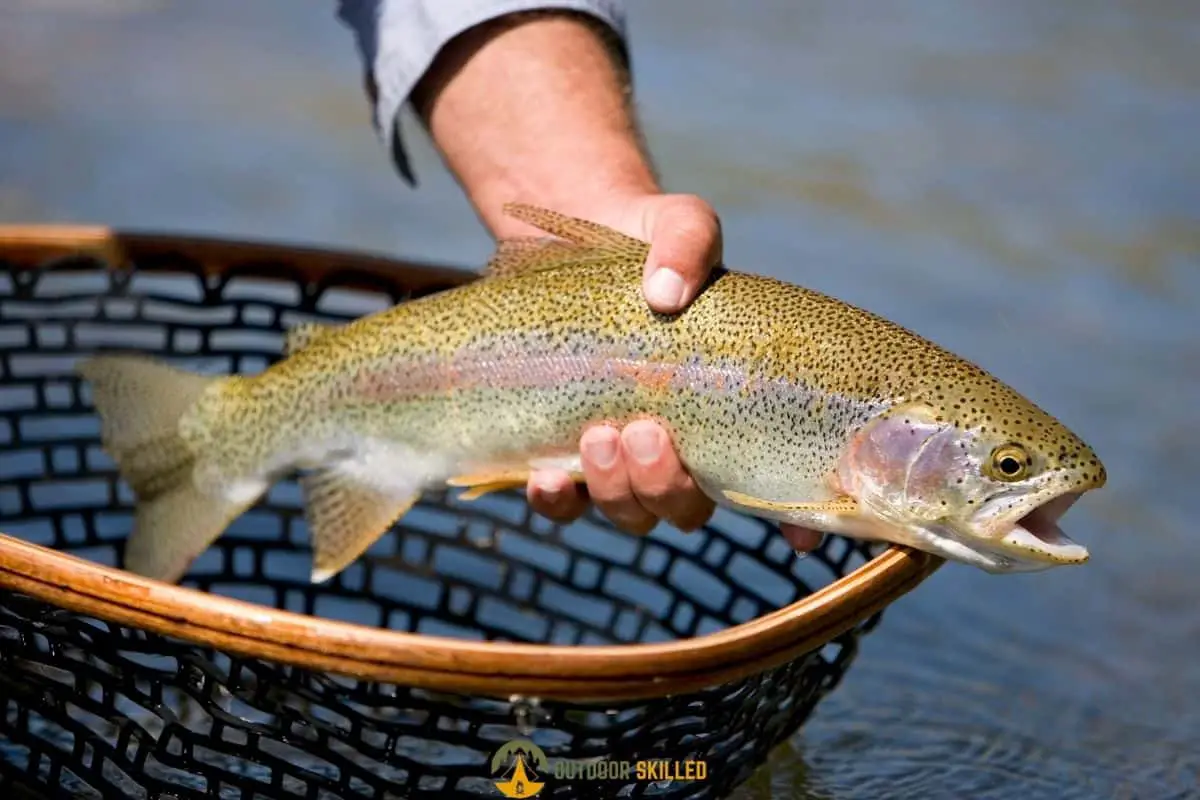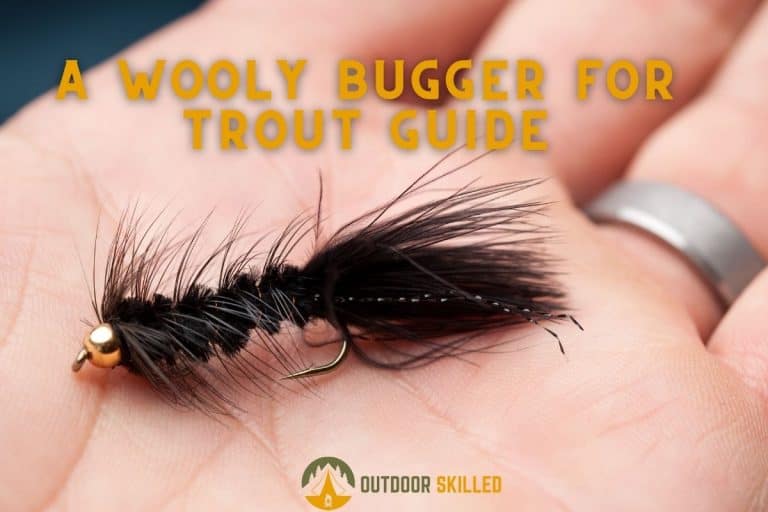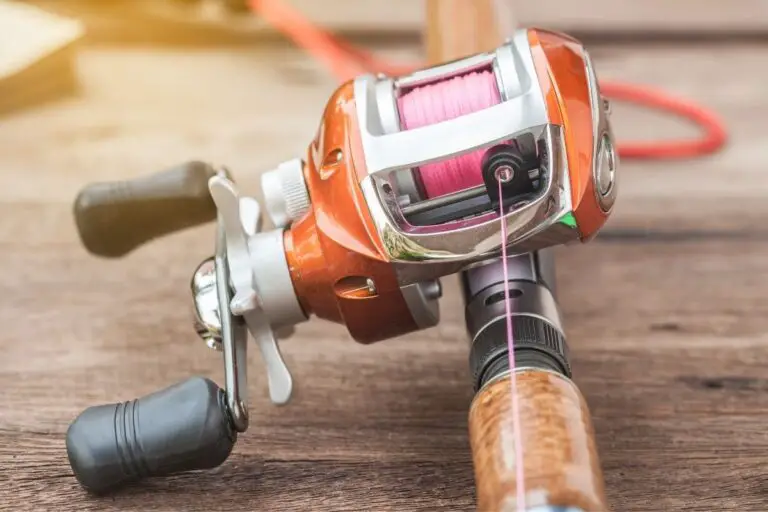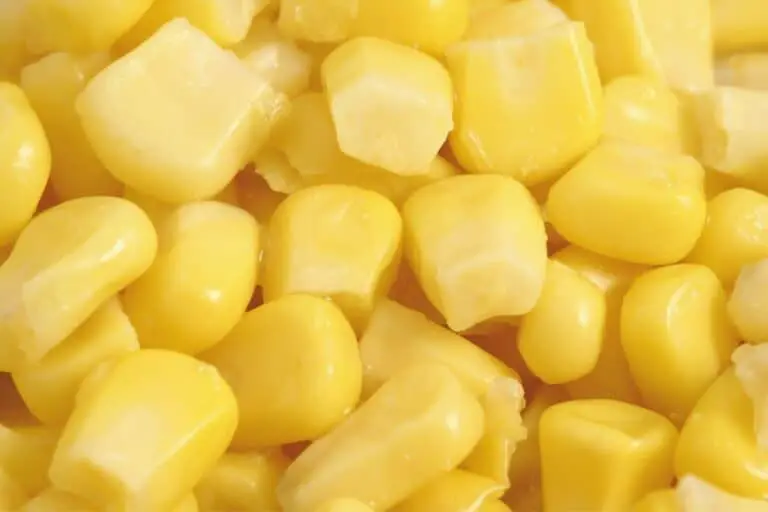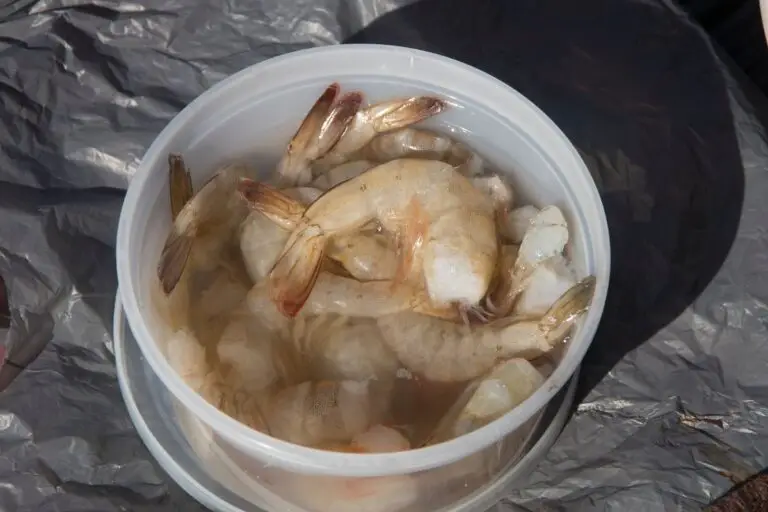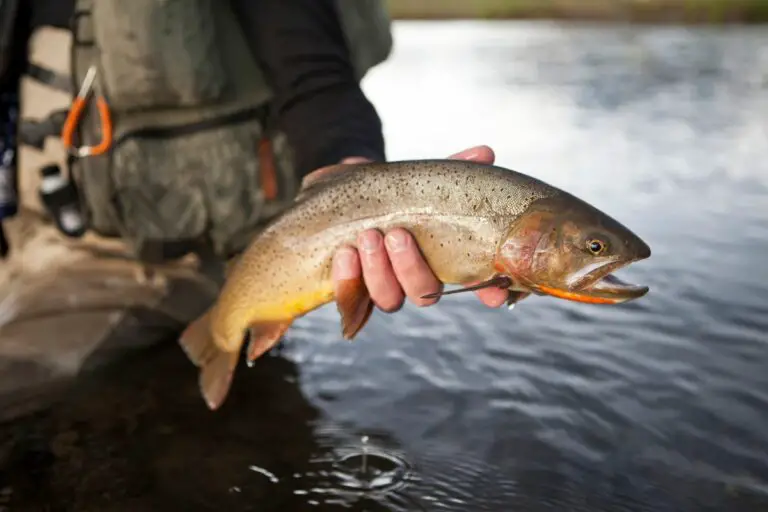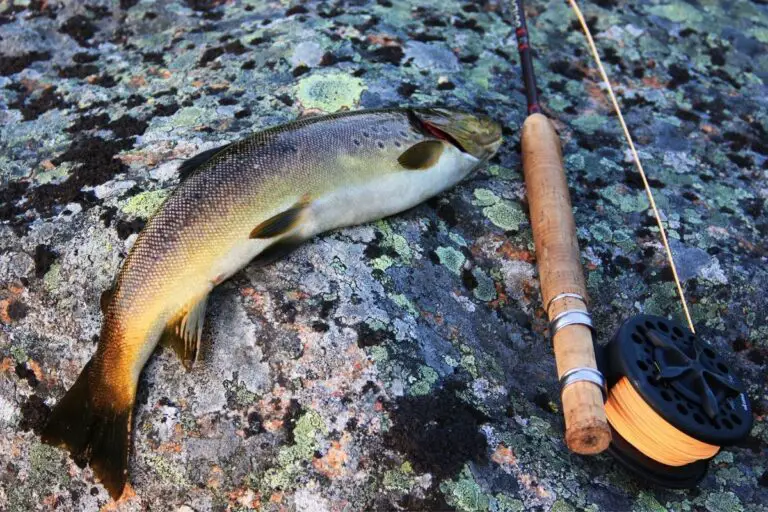Trout Fishing Basics – A Complete Guide for Beginners That Gets Results
Trout is without a doubt one of the most pursued game fish around. Anglers keep chasing it with different approaches until they get it right. If you’re a beginner who was enticed by the idea of catching trout for the first time, search no more.
In short, How can you catch trout? You can catch trout by choosing the right gear that is light, picking a good time to target them according to the season that you’re fishing in, choosing the best bait and lure that match their forage the best, and detecting the right depth of where to cast your lure.
Of course this is not very helpful if you’re gearing up to catch trout, but this is just to give you an idea. To learn all the details and the trout fishing basics (plus some really helpful pro tips), just keep on reading…
Table of Contents
What Are Trout?

First things first; what even are Trout? Trout are freshwater fish that belong to the genera Oncorhynchus, Salmo, and Salvelinus, which are all members of the Salmoninae subfamily of the family Salmonidae.
Salmon and char are closely related to trout, and salmon and char species are included in the same genera as trout (Oncorhynchus – Pacific salmon and trout, Salmo – Atlantic salmon and various trout, Salvelinus – char and trout).
Trout is a big family that can spouse and create fantastic hybrids in the wild. Whether they’re raised in the wild or in fish farms, they are found in lots of water bodies around the world. Trout raised in fish farms later get stocked in a suitable water body to complete their life span.
Some of the prime spots for trout are:
- Chilean Patagonia
- Wanaka, New Zealand
- Kamchatka Peninsula, Russia
- Rio Grande River, Argentina
- British Columbia, Canada
- High Mountain Lakes of Colorado
- Flathead River, Montana
- Green River, Utah
- Bristol Bay, Alaska
- Baja Peninsula, Mexico
Different Types Of Trout
Here’s a reflection on popular types of trout and how you can spot the difference between them:
Rainbow trout
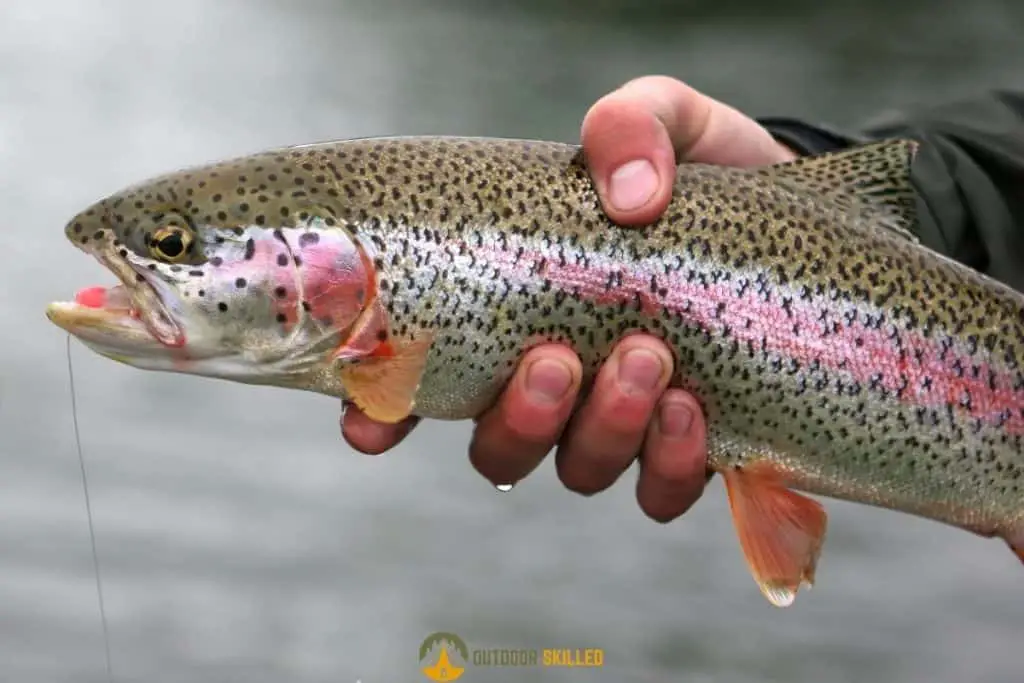
Rainbow trout is one of the most well-known species in North America and Canada. Their name is the best description of their coloration; a signature pink stripe that runs along their side with black spots on their body. They can also be recognized by their spotted dorsal fin and their wide square tail.
Rainbow trout’s popularity exceeded their native range of Alaska to Mexico, they have been stocked all around the world. Canada is no exception as you can find them in all the Great Lakes, and as far south as Georgia and Alabama.
Steelhead trout
Steelhead trout looks different from rainbow trout to an extent that some people don’t know it’s a rainbow trout subspecies. However, they’re similar to rainbow trout in skin color; the faint pink line along its whole body with small dark spots on top of it. It can be considered the sea-form of rainbow trout.
Golden trout and redband trout
Golden and redband trout are both considered the other main subspecies of rainbow trout. They’re stocked in various ranges but you can find heavy populations of them in specific rivers in the Midwest and Pacific states of the US.
Golden trout have the same pink trail as the rainbow trout but with a very different base; it has a bright yellow-goldish body that has small dark spots on its tail. While redband trout has a red trail along its body with a dark olive base.
Cutthroat trout

The majority of Cutthroat Trout live in the western part of the United States, from the Pacific Coast to the Rocky Mountains. They can also be found in southwestern Canada, and ocean-going Cutthroat Trout can be found as far north as Alaska. Cutthroat trout have been bred in areas of Quebec and the northeastern United States, outside of their normal range.
They’re easily distinguished by the bright red spot behind their jaws and the dark spots on the upper half of their body. Cutthroat trout has up to 11 subspecies that all look a little different from the original one.
Brown trout

Brown trout are not native like rainbow trout and cutthroat trout as they were brought to North America from Germany. Their beautiful nature and the fierce fight they put up when caught encouraged many places to stock them to enhance sport fishing.
They can be caught from Ontario to Georgia, as well as in the Great Lakes. They are also found in the western half of the United States, from California to Colorado, and up into Alberta and British Columbia.
With a name that can be a little deceiving, brown trout is not always brown. They can have different colors depending on where they live; they can be golden or silver but always with red-orange spots with silver rings around them.
Lake trout

Lake trout have various names depending on where you catch them. These names include Mackinaw, Namaycush, Grey Trout, Touladi, or Togue. You can find them in most of Alaska and Canada, as well as the Great Lakes and the Northeastern US. They have expanded beyond this area over the years, and can now be found all over the Rocky Mountains and in reservoirs throughout the United States.
There’s an easy way to distinguish a lake trout; their size can grow up to 80 pounds. Their bodies have a dark base with light spots all over them. Their tail is a recognition sign too as it is deeply forked.
Brook trout

It may be the smallest of them all, weighing no more than 9 pounds. Brook trout are native to the east coast of North America.
Except for Lake Erie, they can be found in all of the Great Lakes, as well as the Appalachian Mountains to the south and the Arctic Sea to the north. Brook trout can now be found in every cold-water stream in Canada, including the Rockies and the southern provinces.
Their worm-like patterns along their back and head, as well as the white tips on their lower fins, make them easy to identify.
Dolly Varden
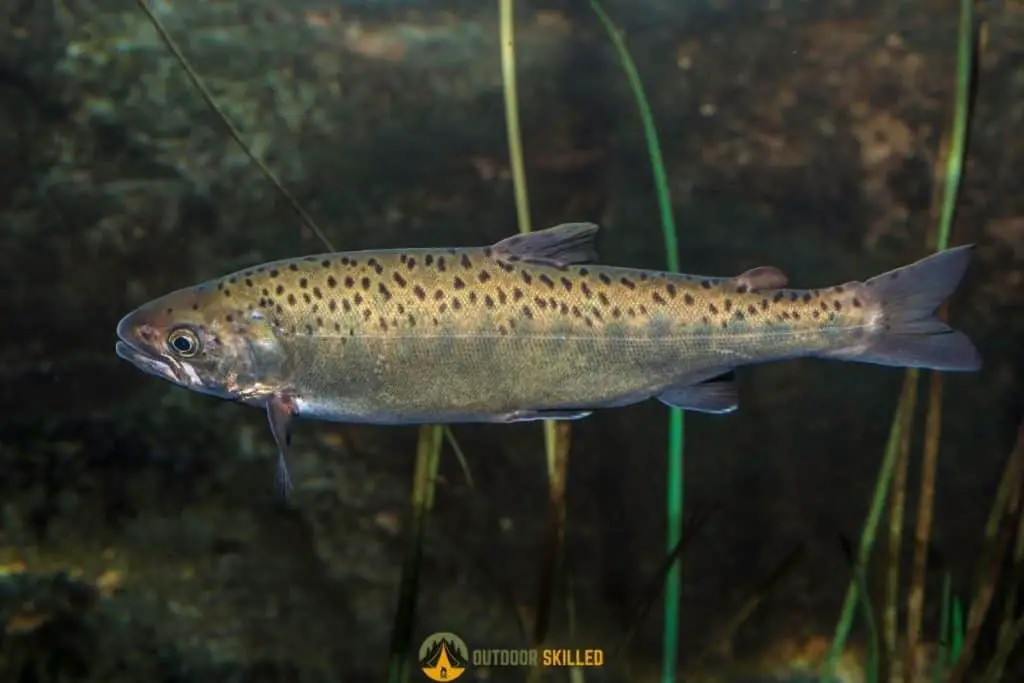
Dolly Varden Trout can be found all the way from the Arctic ranges of Alaska to the northern half of Washington. Rather than North America, they have migrated across the sea and are now found in rivers in Siberia and Japan.
Dolly Varden trout match other fish in their variety in appearance. Size is the biggest indicator – dollies barely weigh more than 10 pounds. They lack the worm-like markings of Brook Trout and have fewer forked tails than Lake Trout.
Best Fishing Techniques to catch trouts
Trolling
Longline trolling and casting techniques are the most common in the spring. Planer boards and lead core should be used to drive the bait away from the boat and to a lower, more controlled depth.
This is a wonderful time of year to cover a lot of water looking for new structures and experimenting with new baits and looking for schools of fish. Once you’ve found one, mark it down so further bites would probably happen in related locations.
Trolling at night can also be an underappreciated thing, and you can learn everything about trolling for fish at night here.
Jigging
To jig for trout you need a walleye/bass rig: a 7 to 7½-foot-long medium- to medium-heavy-action spinning or baitcasting rod, and a reel spooled with 10-pound-test monofilament or fluorocarbon, or 14-pound-test braided line. You can complete your set-up with a variety of lures.
Fly fishing
Fly fishing is popular when it comes to trout. They feed on lots of flies and insects around the water surface or lower which can maximize your chances to catch a hungry trout.
Using an indicator in fly fishing is something you can’t go without. When you use it, you can experiment by lowering it lower and lower before you reach the sweet spot. Cast in nymphs, midges, mayflies, and chironomids. Or try your best to match whatever insects roaming around you to catch the trout’s attention
Fishing Gear You Need To Catch Trout
Using the right arsenal for your fight with trout is also essential. I encourage you to use a light or medium-light spinning rod in the 5ft to 7ft range. Any good quality reel will be fine as long as it matches the rod weight and has a good reel that has a solid drag system.
I’ve some pretty good experience with rods for catching trout, so I’ve made this guide on the best fishing rods for trout here which you should definitely check as I think they can significantly help your chances of catching trout.
It’s safe to go with a 6-pound monofilament or fluorocarbon. You can also use something like a 10-pound braid with a 4-to-6 foot (12-to-1.8 meter) fluorocarbon leader. Add a 6 or 8 bait hook and one or two split shots and fasten it 10-to-12 inches (about 25-to-30 cm) above the hook. Adjust the weight by adding or subtracting split shots if required to keep the bait going in the current.
For my picks, check the best monofilament lines here, the best fluorocarbon lines here, and the best flyfishing lines for the money here.
I also have a separate guide on the best fishing lines for trout here that has all the recommendations you need to check before your next adventure, so give it a look as well.
Best Baits To Catch Trout
If you’re a live bait fan, minnows tend to be your go-to option. Trout feed on small to medium-sized baitfish in their natural habitat, so it should come as no surprise that the minnow on the end of your line may also appear to be a worthy meal. Nightcrawlers and worms can make excellent live bait as well.
PowerBait or Power Eggs can be effective for stocked trout because they spend their early lives feeding on them in fish farms.
Interestingly enough, Salmon Eggs are also a pretty effective lure for trout. You can learn more about this in my guide to using Salmon Eggs for catching trout here.
Best Lures To Catch Trout
The keyword is shiny. Shiny lures can attract trout anywhere, especially on dark days or deeper water where they stand out. Spoons make a great lure because they have the advantage of the bright metallic flashes that attract trout.
The best spoon color for trout includes white, gold, brown, green, black, silver, pink, orange, yellow, red, blue, silver, and chartreuse. They are all great colors to ensure your lure is visible at depth.
Spinners are also very trout-productive. They come in different sizes and colors that do their best to imitate any forage you want. You’ll have to work your rod tip to give the spinner a quick jerk every once in a while if you’re fishing in still waters.
Crankbaits have also proved effective in catching trout. When fishing with crankbaits, try to match the size and color of the baitfish in the area where you are fishing. Most days, browns, blacks, rainbow trout, and perch colors perform exceptionally well.
Best Spots To Catch Trout
Trout can be seen actively feeding on emerging insects and schools of baitfish in shallow water. Spring is one of the best times of year to target lake trout.
They can be found near points, beaches, and underwater reefs in spring. Due to the warmer water flow supplying a smorgasbord of insects and other food, which in turn attracts baitfish, river mouths may also be suitable during ice-out conditions, making them ideal places to target hungry predatory trout.
When the temperature of the water rises, target broad, protruding underwater platforms, boulder-strewn reefs, sunken shoals, and isolated rock piles are examples of prime spots where you’ll find trophy trout hiding to seek shade.
If you’re fishing in a stream, you can find them seeking shelter in deep pools and water pockets near under-cut banks or under overhanging trees. You can use small lures into deep water like spinners, jigs, and crankbaits to imitate small fish that trout go after.
Trout may like to stay in deeper water but it’s unwise to always assume that. It is recommended every once in a while to cast the lures in the 10-foot (3-meter) zone below the thermocline. For example, if the thermocline is 35 feet (10.6 meters) deep, spend the majority of your time jigging 35-to-45 feet (10.6-to-13.7 meters) below the boat.
The bent minnow is an excellent idea here. You can also try small poppers, cicadas, hoppers, and stick baits.
Catching Freshwater VS saltwater trout
Freshwater trout
Freshwater trout includes Rainbow Trout (Oncorhynchus mykiss), Brook Trout (Salvelinus fontinalis), Brown Trout (Salmo trutta), Cutthroat Trout (Oncorhynchus clarkii) and Lake Trout (Salvelinus namaycush).
To catch a freshwater trout you’ll need a light or medium-light spinning rod in the 5ft to 7ft range, paired with any reel that matches its weight, and a 6-pound monofilament or fluorocarbon. Add a 6 or 8 bait hook and one or two split shots and fasten it 10-to-12 inches (about 25-to-30 cm) above the hook.
Vary your retrieve with a variety of lures. You can use spoons, spinners, jigs, crankbait, and any live bait that match the forage of trout where you’re fishing. Use darker colors if you’re fishing deeper in water or on cloudy days. While bright colors work best around the water surface where there is plenty of light.
Saltwater trout
The Spotted Sea Trout (Cynoscion nebulosus), also known as Speckled Trout, Speck, and Weakfish depending on where you catch them, is the most popular saltwater trout. They’re popular along the Gulf of Mexico’s and Atlantic Coasts near-shore and estuarine areas. Florida, Texas, Louisiana, and Alabama are prime spots for it.
To catch sea trout, use plastic jigs, a 6 ½ or 7-foot medium-action spinning rod that is rigged with a 12-pound test monofilament fishing line and 20-pound fluorocarbon leader line. If you’re allowed to use live bait, try free-lining a live shrimp on a size 1/0 circle hook and wait for it to do wonders.
Best Times of The Day To Catch Trout
Some anglers say that trout will bite any day and time if given the right bait in the right spot. However, picking the exact right time is essential in maximizing your chances of getting successful strikes of trout.
Summer
The best time to fish for trout during summer is early morning and late afternoon. You can try midday fishing only if it’s overcast, cloudy, or rainy. Fishing midday might be a terrible idea. If it’s hot and the sun is in the middle of the sky, trout will dive deeper and hide to seek shade.
Spring
The best time of day to fish is mid-to-late morning followed by mid-to-late afternoon. Go for early mornings if the temperature is a bit warm. As we move later in spring, your chances will be better in the late afternoon.
Winter
During winter, The best time of day for trout fishing is mid-to-late morning. Late afternoon can sometimes generate good results too. Winter by far is the most productive season for trout fishing.
Fall
In early fall days, early morning will serve you best followed by mid-to-late afternoon. In later fall days, you may want to stick with mid-to-late afternoons. Avoid nighttime in the fall as trout is less active then.
Pro Tips and Tactics for catching Trouts
- Target trout on cold days. Trout are cold-water lovers and brown trout prefer water temperatures of less than 59°F (15°C). They feed heavily then and you can easily get one on the hook.
- Use live bait. Bait like scrub worms, earthworms, minnows, mudeye, maggots, yabbies, crickets, grubs, and grasshoppers will be effective almost any time you go fishing for trout. Their smell attracts them from afar.
- Target rainy days. It might be a challenging task to fish during the rain but it boosts your chances of catching trout as they react very favorably to rain. Using dry flies will guarantee you some trout strikes.
- Use a long-handed net. This will make it easier for you to reach down into the water to net trout instead of getting it on the boat. It’s also safer to keep the fish underwater while you unhook it.
- Grab a depth map. This will help you spot the closest part of the shore to the deeper spots of the water body. That’s often the best place to cast from because you get to target them in the shallows but can work your way deeper if needed.
- Use sonar devices. Many people ignore this tip even though it can make their fishing for trout 10 times easier. By locating small fish markings you can locate trout almost immediately as they often stay there to feed.
- Target them right after stocking. After trout are stocked, they take time to adjust to the environment by sticking around the point where they dumped in for a few days. This also means that asking people about where exactly the stocking truck dumped them is a great help.
I tried my best to make this guide as helpful as possible, if you have any suggestions to add to it, you can email me and I’ll definitely add it if it makes the guide more helpful. If you like the post, please share it with other anglers who might find it helpful as well!
Related Questions
Where Are Lake Trout Found?
Lake trout are found in most of Alaska and Canada, as well as the Great Lakes and the Northeastern US. They have expanded beyond this area over the years, and can now be found all over the Rocky Mountains and in reservoirs throughout the United States.
What Colors Do Lake Trout Like?
Lake trout like the colors that can imitate their forage. These colors may include white, gold, brown, green, black, orange, yellow, red, and blue. Other unnatural colors such as pink, silver, and chartreuse are also effective. They are all great colors to ensure your lure is visible at depth.
Helpful Resources
- The Orvis Fly-Fishing Guide by Tom Rosenbauer (You can also check it out on Amazon here)
- The Measurement of Benefits of Trout Fishing: Preliminary Results of a Study at Grafham Water, Great Ouse Water Authority, Huntingdonshire
- Trout Fishing in America by Richard Brautigan (you can check the book on Amazon here)
If you like this article, please share it or pin it, you can find the share buttons below. We will really appreciate it ❤️

